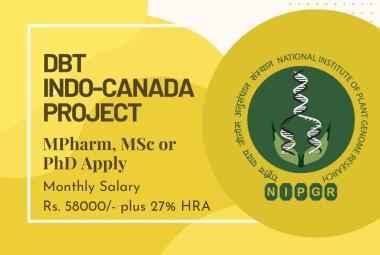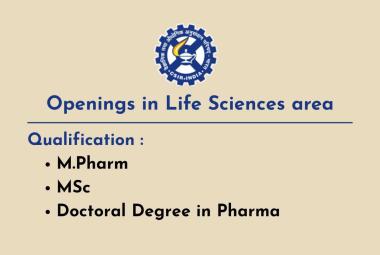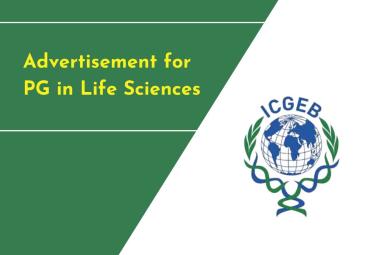About Authors:
Das Saumya1*, Basu saumya Priya1, Das Manas Kumar2, Das Sanjita1
1. Institute of Pharmaceutical Technology, NIET, Greater Noida, U.P., India.
2. Department of Pharmacy,
IEC-CET,
Greater Noida, U.P.,
India.
Introduction
Cancer has been one of the greatest scourges of mankind since time immemorial. It may be regarded as a series of malignant diseases characterized by (i) abnormal growth of cells (ii) ability to invade adjacent tissues and even distant organs and (iii) the eventual death of the affected patient if the tumor has progressed beyond the stage where it can be successfully removed. The incidence of cancer is expected to rise worldwide notably because of increase in life expectancy, changes in lifestyle patterns and environmental factors. Over the years, an increased understanding of cancer at cellular, molecular and genetic levels is opening up enormous opportunities to interrupt its initiation and progression. Although rapid strides have been made in treatment of cancer, there still remain many stumbling blocks in achieving cancer prevention and cure.
[adsense:336x280:8701650588]
Reference Id: PHARMATUTOR-ART-1208
Cancer: A Menace
Cancer claims the lives of more than six million people eachyear in the world. According to World Cancer Reports, global cancer rates may increase by 50% and it is estimated that by 2020, 20 million new cases will be diagnosed each year. In India, the problem is immense as one in every ten deaths is related to cancer. There are approximately 2-3 million cases of cancer at any given time, with around 7 lakh new cases being detected each year. The problem is further compounded by the fact that 80% of the cases are incurable and only 3% of the people who need palliative care; actually receive it . Cancer poses as an immense economic burden on the limited resources of a developing country like India.
History of cancer management strategies
Cancer may be managed by employing any of the following five principal modalities: surgery, hormone therapy, Immunotherapy, radiotherapy and chemotherapy. Historically, the first surgery as treatment modality of cancer was conducted in 1895 by Scottish surgeon on 33 yr old woman suffering from advanced breast cancer. During the 19th century, immunotherapy gained importance in cancer management from the observation that tumor often regresses after an acute bacterial infection. It was explained that the non specific stimulation of active immunity appears to enhance phagocyte and t-lymphocyte function. Sulphur mustards were used as chemical weapons in World War I as they depress hemopoiesis and lymphoid tissues. They were later developed as one of the first cytotoxic chemotherapeutic agents.
Current management strategies for cancer treatment
Major improvements in the early recognition and treatment of infectious diseases have been done in the last 60 years. This has resulted in a significant reduction in the morbidity and mortality associated with these diseases.
Over the years, number of approaches has been developed for clinical use and a number of anticancer drugs have come out of these as a result. The main problem with these agents is the toxicity associated with them due to their lack of specificity, as these agents also kill healthy cells. Other than this, drug resistance is another problem which arises after some time. Nowadays, combination therapy is used o combat this problem, which seems to be a temporary one. But this approach threatens the possibility of the development of drug resistance. The principal groups of cytotoxic agents include: alkylating agents (busulphan, carmustine, cyclophosphamide, cisplatin); antimetabolites (fluorouracil, methotrexate, azathioprine, mercatopurine); spindle poisons (vincristine, vinblastine, paclitaxel); miscellaneous (dacarbazine, hydroxyurea).
Need for Plant derived compounds
Mortality that results from cancer is still unacceptably high and is becoming a growing public problem in the 21st century. The estimated worldwide new incidence of cancer is about 6 million cases per year. In the developed countries cancer is the second major cause of death after cardiovascular diseases. Natural products have been the mainstay in cancer chemotherapy for the past 30 years. Over 60 % of the clinically used anticancer drugs are of natural origin and most of them are derived from higher plants. Natural resources offer a potentially infinite source of chemical diversity unmatched by synthetic or combinatorially derived compound collections. Natural products screening needs to be limited for complex biological targets or if there is strong precedent or rationale for natural products derived actives. A variety of approaches are adopted in assimilating the information needed to select plants of particular relevance for a given disease target. Many of the chemotherapeutic medicines in current use have been discovered with the aid of traditional medicinal uses. This is the case with the powerful anti-leukemial drugs vinblastin and vincristin isolated from the native Madagascar plant, Catharanthus roseus and the podophyllins isolated from the roots of the mayapple, Podophyllum peltatum. The limitations of the available therapeutic modalities generate a continued need for the new molecules.
Plants have been used for the treatment of malignant diseases for centuries and a comprehensive literature search reveals a list of over 1400 genera implicated with anti-tumor activity. Out of estimated 250,000 to 350,000 plant species identified so far, about 35,000 are used worldwide for medicinal purposes. It has been confirmed by WHO that herbal medicines serve the health needs of about 80 percent of the world’s population; especially for millions of people in the vast rural areas of developing countries. Their dominant role in cancer chemotherapeutics is clear with about 74% of anticancer compounds being either natural products, or natural product-derived. Of the 92 anti-cancer drugs commercially available prior to 1983 in the USA and approved worldwide between 1983 and 1994, approximately 62% can be related to natural origin. The search for new anticancer lead compounds with enhanced biological properties and fewer adverse side effects is still needed. Plant derived compounds are likely to provide many of the lead structures also in the future.
[adsense:468x15:2204050025]
Screening of plants
Higher plants are still poorly explored as sources of new drugs. There are several ways in selecting plant materials when searching for new medicinal plants/active compounds. Ethnopharmacological information on medicinal plants is often of substantial importance for the finding of new potential medicinal plants/new ways of using an already known plant. It has been estimated that 74 % of the pharmacologically active, plant derived components were discovered after the ethnomedical uses of the plants started to beinvestigated. Another important way of discovering new medicinal plants and lead compounds is the phylogenetic approach in which a number of closely related species of plants, assumed to contain related chemical compounds (chemotaxonomy), are screened for their biological effects.
Throughout the world many plant species have been screened for their anticancerous activity in vitro and in vivo. Recently an exhaustive review of 20 years on anticancerous activity against bowel cancer for extracts and compounds from about 45 plant species and gynecological cancer from 8 plant species were reported which shows that various secondary metabolites such as diterpenes, triterpenes, triterpenoid saponins, alkaloids and few phenolic compounds to exhibit anti-cancerous activity. The predominant data referred to compounds known as anticancer agents includes resveratrol, catechins, genistein, curcumin, as well as others, such as diallyl sulfide, S-allyl cysteine, allicin, lycopene, capsaicin, 6-gingerol, ellagic acid, ursolic acid, silymarin, anethol, and eugenol. Based on the encouraging data obtained from these studies, natural product chemists are increasingly turning to new sources in search for biological compounds for treatment of cancer. This review summarizes potential Indian medicinal plants possessing anti-cancer, antitumor antiangiogensis, antiproliferative potential with their reported activity.
Conclusion
In a decade of extensive research, great progress has been achieved in the discovery of potent anti-cancer agents from plants. Number plants have been used as lead compounds because of their specific activity and low toxicity. The present review article reports the findings from an extensive literature search of almost all plants that have been assessed for anticancer, antitumor, antimalignant activity over the past 20-30 years. An attempt has been made to summarize the information in order to highlight those promising plant species which are worthy of further investigation as leads for drug development. Various plant species from a wide range of families and origins, containing various chemical classes of compounds, have been screened for such activity.
References
1. Attele AS, Wu JA, Yuan CS. Ginseng pharmacology: multiple constituents and multiple actions. Biochem Pharmacol. 1999;58(11):1685–1693.
2. Cha YY, Lee EO, Lee HJ, Park YD, Ko SG, Kim DH, Kim HM, Kang IC, Kim SH. Methylene chloride fraction of Scutellaria barbata induces apoptosis in human U937 leukemia cellsvia the mitochondrial signaling pathway. Clin Chim Acta. 2004;348 (1-2):41–48.
3. Chan TY, Tam HP, Lai CK, Chan AY. A multidisciplinary approach to the toxicologic problems associated with the use of herbal medicines. Ther Drug Monit. 2005;27(1):53–57.
4. Chen GQ, Zhu J, Shi XG, Ni JH, Zhong HJ, Si GY, Jin XL, Tang W, Li XS, Xong SM, et al. In vitro studies on cellular and molecular mechanisms of arsenic trioxide (As2O3) in the treatment of acute promyelocytic leukemia: As2O3 induces NB4 cell apoptosis with downregulation of Bcl-2 expression and modulation of PML-RAR alpha/PML proteins. Blood. 1996;88(3): 45-47.
5. Chen RC, Su JH, Ouyang GL, Cai KX, Li JQ, Xie XG. Induction of differentiation in human hepatocarcinoma cells by isoverbascoside. Planta Med. 2002;68(4):370–372.
6. Chen Q, Peng W, Qi S, Xu A. Apoptosis of human highly metastatic lung cancer cell line 95-D induced by acutiaporberine, a novel bisalkaloid derived from Thalictrum acutifolium. Planta Med. 2002;68(6):550–553.
7. Cheng YL, Chang WL, Lee SC, Liu YG, Lin HC, Chen CJ, Yen CY, Yu DS, Lin SZ, Harn HJ. Acetone extract of Bupleurum scorzonerifolium inhibits proliferation of A549 human lung cancer cells via inducing apoptosis and suppressing telomerase activity. Life Sci. 2003;73(18):2383–2394.
8. Cheng KF, Leung KS, Leung PC. Interactions between modern and Chinese medicinal drugs: a general review. Am J Chin Med. 2003;31(2):163–169.
9. Efferth T, Davey M, Olbrich A, Rucker G, Gebhart E, Davey R. Activity of drugs from traditional Chinese medicine toward sensitive and MDR1- or MRP1-overexpressing multidrug-resistant human CCRF-CEM leukemia cells. Blood Cells Mol Dis. 2002;28(2):160–168.
10. Frese S, Pirnia F, Miescher D, Krajewski S, Borner MM, Reed JC, Schmid RA. PG490-mediated sensitization of lung cancer cells to Apo2L/TRAIL-induced apoptosis requires activation of ERK2. Oncogene. 2003;22(35):5427–5435.
11. Hayashi I, Ohotsuki M, Suzuki I, Watanabe T. Effects of oral administration of Echinacea purpurea (American herb) on incidence of spontaneous leukemia caused by recombinant leukemia viruses in AKR/J mice. Nihon Rinsho Meneki Gakkai Kaishi. 2001;24(1):10–20.
12. Hong-Fen L, Waisman T, Maimon Y, Shakhar K, Rosenne E, Ben-Eliyahu S. The effects of a Chinese herb formula, anti-cancer number one (ACNO), on NK cell activity and tumor metastasis in rats. Int Immunopharmacol. 2001;1(11):1947–1956.
13. Hsieh TC, Lu X, Guo J, Xiong W, Kunicki J, Darzynkiewicz Z, Wu JM. Effects of herbal preparation Equiguard on hormone-responsive and hormone-refractory prostate carcinoma cells: mechanistic studies. Int J Oncol. 2002;20(4):681–689.
14. Hsieh CC, Lin WC, Lee MR, Hsu SL, Liu HS, Kao ST, Hsieh MT. Dang-Gui-Bu-Xai-Tang modulated the immunity of tumor bearing mice. Immunopharmacol Immunotoxicol. 2003;25(2):259–271.
15. Huang YH, Zhang SH, Zhen RX, Xu XD, Zhen YS. Asiaticoside inducing apoptosis of tumor cells and enhancing anti-tumor activity of vincristine. Ai Zheng. 2004;23(12):1599–1604.
16. Huh JE, Kang KS, Ahn KS, Kim DH, Saiki I, Kim SH. Mylabris phalerlata induces apoptosis by caspase activation following cytochrome c release and Bid cleavage. Life Sci. 2003;73(17):2249–2262.
17. Iizuka N, Hazama S, Yoshimura K, Yoshino S, Tangoku A, Miyamoto K, Okita K, Oka M. Anticachectic effects of the natural herb Coptidis rhizoma and berberine on mice bearing colon 26/clone 20 adenocarcinoma. Int J Cancer. 2002;99(2):286–291.
18. Ikezoe T, Chen S, Saito T, Asou H, Kyo T, Tanosaki S, Heber D, Taguchi H, Koeffler HP. PC-SPES decreases proliferation and induces differentiation and apoptosis of human acute myeloid leukemia cells. Int J Oncol. 2003;23(4):1203–1211.
19. Ikezoe T, Chen SS, Yang Y, Heber D, Taguchi H, Koeffler HP. PC-SPES: molecular mechanism to induce apoptosis and down-regulate expression of PSA in LNCaP human prostate cancer cells. Int J Oncol. 2003;23(5):1461–1470.
20. Li DP. Progresses in basic studies of anticancer mechanisms of Kanglaite injection (KLT) Zhong Yao Xin Yao Yu Lin Chuang Yao Li. 2001;12(2):122–124. (in Chinese
21. Lin SY, Liu JD, Chang HC, Yeh SD, Lin CH, Lee WS. Magnolol suppresses proliferation of cultured human colon and liver cancer cells by inhibiting DNA synthesis and activating apoptosis. J Cell Biochem. 2002;84(3):532–544.
22. Lin J, Dong HF, Oppenheim JJ, Howard OM. Effects of astragali radix on the growth of different cancer cell lines. World J Gastroenterol. 2003;9(4):670–673.
23. Ma J, Fu NY, Pang DB, Wu WY, Xu AL. Apoptosis induced by isoliquiritigenin in human gastric cancer MGC-803 cells. Planta Med. 2001;67(8):754–757.
24. Mabed M, El-Helw L, Shamaa S. Phase II study of viscum fraxini-2 in patients with advanced hepatocellular carcinoma. Br J Cancer. 2004;90(1):65–69.
25. Oh WK, Kantoff PW, Weinberg V, Jones G, Rini BI, Derynck MK, Bok R, Smith MR, Bubley GJ, Rosen RT, et al. Prospective, multicenter, randomized phase II trial of the herbal supplement, PC-SPES, and diethylstilbestrol in patients with androgen-independent prostate cancer. J Clin Oncol. 2004;22(18):3705–3712.
26. Piao BK, Wang YX, Xie GR, Mansmann U, Matthes H, Beuth J, Lin HS. Impact of complementary mistletoe extract treatment on quality of life in breast, ovarian and non-small cell lung cancer patients. A prospective randomized controlled clinical trial. Anticancer Res. 2004;24(1):303–309.
27. Plouzek CA, Ciolino HP, Clarke R, Yeh GC. Inhibition of P-glycoprotein activity and reversal of multidrug resistance in vitro by rosemary extract. Eur J Cancer. 1999;35(10):1541–1545.
28. Powell CB, Fung P, Jackson J, Dall′Era J, Lewkowicz D, Cohen I, Smith-McCune K. Aqueous extract of herba Scutellaria barbatae, a chinese herb used for ovarian cancer, induces apoptosis of ovarian cancer cell lines. Gynecol Oncol. 2003;91(2):332–340.
29. Semiglasov VF, Stepula VV, Dudov A, Lehmacher W, Mengs U. The standardised mistletoe extract PS76A2 improves QoL in patients with breast cancer receiving adjuvant CMF chemotherapy: a randomised, placebo-controlled, double-blind, multicentre clinical trial. Anticancer Res. 2004;24(2C):1293–1302.
30. Shen ZX, Shi ZZ, Fang J, Gu BW, Li JM, Zhu YM, Shi JY, Zheng PZ, Yan H, Liu YF, et al. All-trans retinoic acid/As2O3 combination yields a high quality remission and survival in newly diagnosed acute promyelocytic leukemia. Proc Natl Acad Sci USA. 2004;101(15):5328–5335.
31. Soignet SL, Maslak P, Wang ZG, Jhanwar S, Calleja E, Dardashti LJ, Corso D, DeBlasio A, Gabrilove J, Scheinberg DA, et al. Complete remission after treatment of acute promyelocytic leukemia with arsenic trioxide. N Engl J Med. 1998;339(19):1341–1348.
32. Takeda Y, Togashi H, Matsuo T, Shinzawa H, Takeda Y, Takahashi T. Growth inhibition and apoptosis of gastric cancer cell lines by Anemarrhena asphodeloides Bunge. J Gastroenterol. 2001;36(2):79–90.
33. Tsai YJ, Chen IL, Horng LY, Wu RT. Induction of differentiation in rat C6 glioma cells with Saikosaponins. Phytother Res. 2002;16(2):117–121.
34. Wartenberg M, Budde P, de Marees M, Grunheck F, Tsang SY, Huang Y, Chen ZY, Hescheler J, Sauer H. Inhibition of tumor-induced angiogenesis and matrix-metalloproteinase expression in confrontation cultures of embryoid bodies and tumor spheroids by plant ingredients used in traditional chinese medicine. Lab Invest. 2003;83(1):87–98.
35. Wheeler RH, Busby L, Samlowski W, et al. Phase I Study of Kanglaite (KLT) a Botanical Product Based on Traditional Chinese Medicine; 2003. Presented at American Society of Clinical Oncology (ASCO) Annual Meeting, Chicago, IL.
36. Xue T, Roy R. Studying traditional Chinese medicine. Science. 2003;300(5620):740–741. doi: 10.1126/science.300.5620.740.
37. Yang LL, Lee CY, Yen KY. Induction of apoptosis by hydrolyzable tannins from Eugenia jambos L. on human leukemia cells. Cancer Lett. 2000;157(1):65–75.
38. Yeh CW, Chen WJ, Chiang CT, Lin-Shiau SY, Lin JK. Suppression of fatty acid synthase in MCF-7 breast cancer cells by tea and tea polyphenols: a possible mechanism for their hypolipidemic effects. Pharmacogenomics J. 2003;3(5):267–276.
39. Zhang DY, Wu J, Ye F, Xue L, Jiang S, Yi J, Zhang W, Wei H, Sung M, Wang W, et al. Inhibition of cancer cell proliferation and prostaglandin E2 synthesis by Scutellaria baicalensis. Cancer Res. 2003;63(14):4037–4043.
40. Zhong L, Chen F, Han J, Shao N, Ouyang R. Effects of red orpiment on cell morphology and expression of PML mRNA and protein in NB4 and HL-60 cells. Chin Med J. 2003;116(1):148–150.
NOW YOU CAN ALSO PUBLISH YOUR ARTICLE ONLINE.
SUBMIT YOUR ARTICLE/PROJECT AT articles@pharmatutor.org
Subscribe to Pharmatutor Alerts by Email
FIND OUT MORE ARTICLES AT OUR DATABASE









